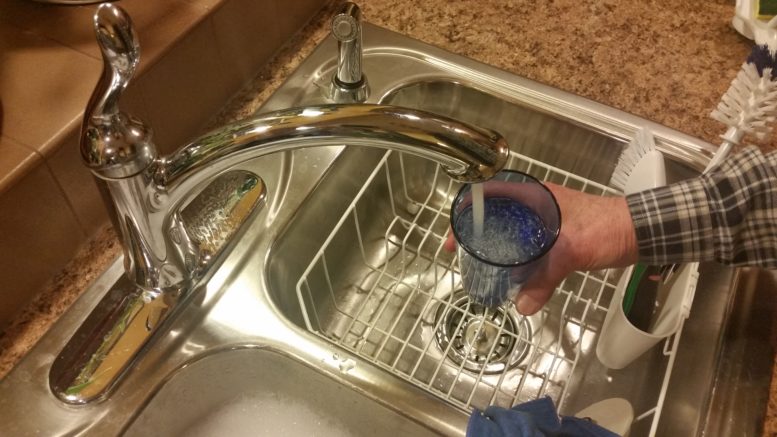By JAN LARSON McLAUGHLIN
BG Independent News
With a few clicks on a map, Bowling Green residents can now zoom into their addresses to see what their waterlines are made of.
The water service lines map is now posted on the city of Bowling Green’s website, http://www.bgohio.org/. Once on the website, residents can click on the water spigot to pull up information on the city waterlines and on the lines going into each residence.
“I don’t want to scare anyone that we have a lead problem. We don’t,” Bowling Green Director of Public Utilities Brian O’Connell said earlier this week to the Board of Public Utilities.
But as a water provider, the city of Bowling Green must now submit a waterline map to the Ohio EPA, showing the type of lines supplying homes – copper, galvanized iron, plastic or lead. That map must be updated every five years.
O’Connell explained that the city is responsible for the portion of the waterline that extends to the curb stop, but the portion of the line going into the residence is the homeowner’s responsibility.
So while O’Connell is confident the lead lines in the city’s portion have been replaced, the same cannot be said of the portions that are the responsibility of homeowners.
“We are not aware at this time of any lead lines” installed by the city, he said. Since 1967, the city service lines were all required to be copper or plastic. Prior to then, lead lines were allowed, but in the 1990s any known lead service lines were replaced.
The electronic map shows a color-coded circle at each residence. Half of the circle shows the makeup of city’s waterline, the other half shows the makeup of the homeowner’s portion of the line. Green indicates non-lead, yellow means lead, and gray means unknown.
The city is still in the process of inputting some of its paper records onto the electronic map, so some of those gray circles will be changing.
The information on the city website also explains to residents where they can locate their water meters, which provide good indicators of the waterline product. There is a link that shows how residents can tell if their pipes are galvanized iron, copper or lead by the color or by whether or not a magnet sticks to them.
Since some residents may unknowingly have lead lines in their homes, the Environmental Protection Agency has had the city test about 30 water samples each year from residences that may have older connections to the city waterlines. In the past several years, only a handful of homes have shown any detectable levels of lead. All the others have tested as “no detect” for any lead.
“I’m not trying to scare anybody,” O’Connell said. However, the risks of lead in water can be significant and long-lasting, especially to young children. “It’s an important health concern.”
Homes built before 1998 may also have lead plumbing fixtures, since prior to then Ohio plumbing code allowed lead in fixtures. So several Bowling Green homes may be affected, since 83 percent of the city’s housing was constructed prior to 1998.
“There are no known lead service lines remaining,” O’Connell said. “But we have no record of what’s in the homes.”
The city has taken further steps to prevent lead in the water by adding corrosion inhibitors to the water.
Also last Monday, the Board of Public Utilities agreed to the purchase of an excavator for the water distribution and the wastewater collection division. The cost of a new excavator purchase through a state bid program is about $171,000.
The utilities department currently rents an excavator, at a cost of between $14,000 and $20,000, each time one is needed for a job. The city has backhoes, but an excavator is needed for heavier work, O’Connell said.
The city could lease to own an excavator, but the end cost would be higher than a new excavator, O’Connell said.
If purchasing a new excavator, the city could apply its excavator rental fees toward the purchase price, he added. Plus the city has a 2001 backhoe that it would like to trade in, that would put another $20,000 toward the excavator purchase price.
The city would not need to replace the backhoe since Bowling Green has three other backhoes.
O’Connell assured the board that a new excavator would last many years.

